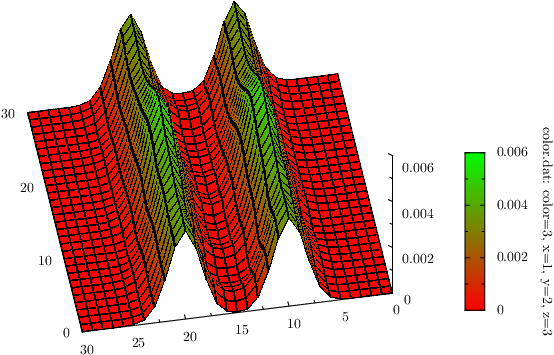PyX — Example: 3dgraphs/color.py
A colored surface

#!/usr/bin/env python from pyx import * g = graph.graphxyz(size=4, projector=graph.graphxyz.parallel(170, 45)) g.plot(graph.data.file("color.dat", x=1, y=2, z=3, color=3), [graph.style.surface(gradient=color.gradient.RedGreen, gridcolor=color.rgb.black, backcolor=color.rgb.black)]) g.writeEPSfile("color") g.writePDFfile("color") g.writeSVGfile("color")
Description
To add colors to the surface you need to pass color data to the plot command. As in this example, you can just reuse the z value. Alternatively you could pass some independend color data.
To bring colors instead of black/white to the surface, you need to change the gradient. Be sure to use the same color space for the gridcolor and the backcolor too.
In this example we also modified the projector. By that you can change the view angle, and you can also (as in this example) use a parallel projection instead of the default central projection. While the later looks more natural, a parallel projection keeps lines parallel independend from their depths. An very simple justification of the parallel projection is the vertical z axis, which stays vertical in the projection. Also the linear axes have equal distances between the ticks, which is not true for central projections.
Skipping the value for the z component will allow you to plot this surface on a two-dimensional graph as well.
